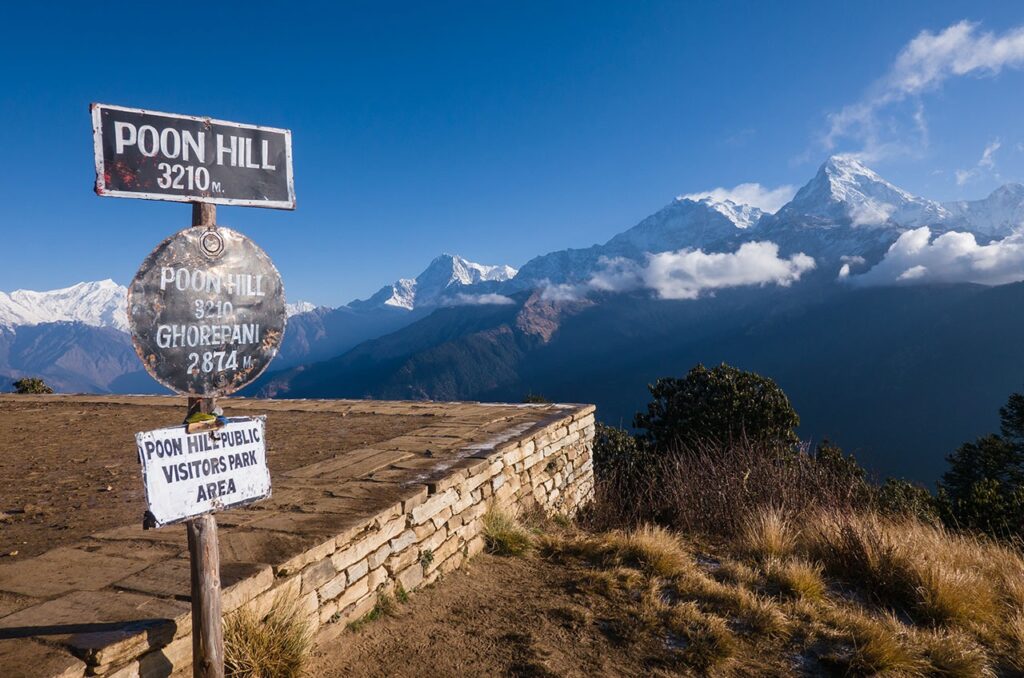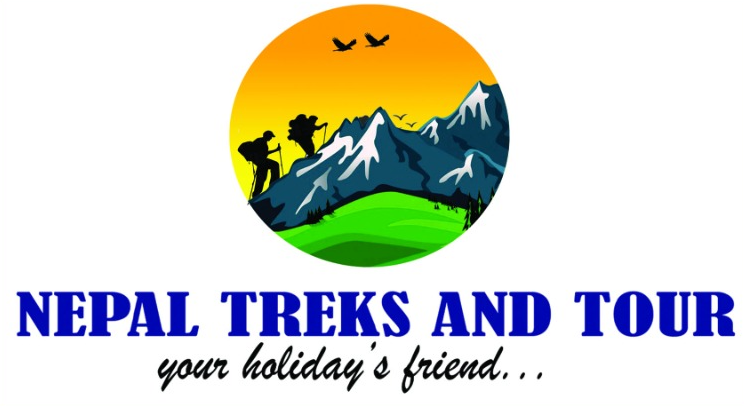The Ghorepani Poon Hill Trek in Spring 2026 offers trekkers a perfect blend of natural beauty, cultural experiences, and Himalayan adventure. Every year from March to May, the Annapurna region transforms into a vibrant landscape of blooming rhododendrons, lush green forests, and terraced farmlands, with clear skies revealing the majestic peaks of Annapurna South, Dhaulagiri, and Machhapuchhre (Fishtail). This short yet rewarding trek is ideal for beginners, families, and first-time trekkers, providing a safe and scenic route to the famous Poon Hill sunrise viewpoint. Along the way, travelers can explore traditional Gurung and Magar villages, enjoy cozy teahouse stays, and experience authentic local culture, making it a truly memorable Himalayan journey guided by the expert team at Nepal Treks and Tour.
Why Spring 2026 Is the Best Time for the Ghorepani Poon Hill Trek
Spring in Nepal is a celebration of life and color. The Ghorepani Poon Hill Trek becomes especially enchanting during this period, when the weather, visibility, and nature align beautifully.

- The Rhododendron Wonderland: From Ghorepani to Tadapani, the trail winds through lush rhododendron forests. In full bloom, the hillsides look like painted gardens—a photographer’s dream.
- Ideal Trekking Weather: Mornings are clear, afternoons are pleasantly warm (15°C–25°C), and nights are cool but comfortable. Unlike winter or monsoon, spring ensures steady weather and excellent trail conditions.
- Crisp Himalayan Visibility: Mountains such as Annapurna South, Dhaulagiri, Machhapuchhre (Fishtail), and Hiunchuli dominate the skyline. The sunrise over these peaks from Poon Hill (3,210 m) is the ultimate reward.
- Cultural Vibrancy: Spring coincides with festivals like Holi (the festival of colors) and Nepali New Year, making it a culturally rich time to visit.
- Accessible for All Levels: Snow is minimal, and the moderate altitude makes the trek safe for families, first-time trekkers, and senior travelers.
Ghorepani Poon Hill Trek Route Overview
The Ghorepani Poon Hill Trek begins with a scenic drive from Pokhara to Nayapul, followed by a gradual ascent through charming villages, terraced farmlands, waterfalls, and lush rhododendron and oak forests. Trekkers pass through Birethanti, Tikhedhunga, and Ulleri, with the steep stone steps at Ulleri providing both a challenge and spectacular views. The trail continues to Ghorepani village (2,850 m), a cozy mountain settlement that serves as the gateway to Poon Hill (3,210 m), where the iconic sunrise panorama of the Annapurna and Dhaulagiri ranges awaits. From there, the trek descends through Tadapani and Ghandruk villages, offering cultural immersion with local Gurung communities, before returning to Pokhara. This route perfectly balances nature, adventure, and cultural experiences, making it one of Nepal’s most accessible and rewarding short treks.
Sample Itinerary (4–5 Days)
Day 1 – Pokhara to Nayapul, Trek to Ulleri
Drive for 1.5 hours to Nayapul, then hike through Birethanti and Tikhedhunga, climbing stone steps to Ulleri.
Day 2 – Ulleri to Ghorepani (2,850 m)
A steady uphill trek through oak and rhododendron forests leads to Ghorepani village—your gateway to Poon Hill.
Day 3 – Poon Hill Sunrise (3,210 m), Trek to Tadapani
Start before dawn to reach Poon Hill for sunrise over the Annapurna and Dhaulagiri ranges. Continue through rhododendron forests to Tadapani.
Day 4 – Tadapani to Ghandruk, Drive to Pokhara
Descend to the traditional Gurung village of Ghandruk, explore local culture, and return to Pokhara.
(Optional Day 5 – Rest day in Pokhara or extension to Annapurna Base Camp.)
This itinerary is flexible and can be customized by Nepal Treks and Tour depending on time, fitness, and interests.
Trek Difficulty and Preparation Tips
The Ghorepani Poon Hill Trek is considered easy to moderate, making it suitable for beginners, families, and first-time trekkers. The maximum altitude reaches 3,210 meters at Poon Hill, which is low enough to minimize the risk of altitude sickness. The trail includes stone steps, forested paths, and gentle ascents, with daily trekking durations of 4–6 hours, allowing plenty of time to enjoy the scenery and take rest stops.

Preparation Tips from Nepal Treks and Tour:
- Physical Fitness: Engage in light cardio, hill walking, or stair climbing 2–3 weeks before the trek to build endurance.
- Footwear: Wear sturdy trekking shoes with good ankle support; trekking poles can help with steep stone steps.
- Layered Clothing: Temperatures vary from cool mornings (around 5°C) to warm afternoons (15°C–25°C). Layering allows comfort in all conditions.
- Hydration & Nutrition: Carry a refillable water bottle and eat small meals frequently to maintain energy levels.
- Acclimatization: Although the trek is moderate, take it slow on ascent days and listen to your body to avoid fatigue.
- Essentials: Pack a headlamp, rain jacket, sunscreen, hat, gloves, and any personal medication.
- Guidance: Trek with a licensed guide from Nepal Treks and Tour for safety, local knowledge, and cultural insights.
With these preparations, trekkers can enjoy a safe, comfortable, and memorable journey through the Annapurna region, taking in panoramic mountain views, rhododendron forests, and the iconic sunrise at Poon Hill.
Accommodation and Meals
Accommodation
- Type: Traditional mountain teahouses and lodges
- Villages: Ulleri, Ghorepani, Tadapani, Ghandruk
- Room Setup: Private or twin-sharing rooms; shared bathrooms
- Atmosphere: Cozy, family-run lodges with warm hospitality
- Facilities: Common dining areas with wood stoves; basic amenities; blankets provided
Meals
- Cuisine: Authentic Nepali dishes – dal bhat (rice & lentils), vegetable curries, noodles, soups, pancakes
- Drinks: Tea, coffee, and hot chocolate available; boiled or filtered water recommended
- Dietary Options: Vegetarian options widely available; special diets can be requested
- Serving Style: Home-cooked meals in teahouse dining halls; hearty portions to fuel trekking
- Tip: Carry energy snacks for the trail, especially on early morning Poon Hill hikes
Extra Notes
- Teahouses provide a social environment, allowing trekkers to meet fellow travelers.
- Early booking is recommended for Spring 2026, as teahouses can fill quickly during peak rhododendron season.
Permits and Documentation
Required Permits
Annapurna Conservation Area Permit (ACAP)
- Fee: NPR 3,000 (~USD 25)
- Purpose: Protects the environment and supports sustainable tourism in the Annapurna region.
Trekkers’ Information Management System (TIMS) Card
- Fee: NPR 2,000 (~USD 15)
- Purpose: Ensures trekkers are registered and helps with safety and monitoring.
How Permits Are Arranged
- Nepal Treks and Tour handles all permit processing, saving time and ensuring compliance with park regulations.
- Permits are usually issued in Pokhara or Kathmandu, before starting the trek.
- Guides carry copies and verify registration during trekking, ensuring a hassle-free experience.
Important Tips
- Carry a valid passport; permits are issued in your name.
- Keep photocopies of permits in your daypack.
- Lost permits may require a replacement fee or delay the trek, so handle them carefully.
The Ghorepani Poon Hill Trek in Spring 2026 is more than a short hike—it’s a journey through nature’s finest artistry. Every sunrise, flower, and smile along the trail tells a story of Nepal’s timeless beauty.
The Ghorepani Poon Hill Trek in Spring 2026 is more than just a short Himalayan journey—it’s an immersion into Nepal’s stunning landscapes, vibrant rhododendron forests, and rich cultural heritage. From the breathtaking sunrise at Poon Hill to the charming villages of Ghorepani, Tadapani, and Ghandruk, every step of the trek offers unforgettable experiences for trekkers of all levels. With moderate trails, cozy teahouses, and the expert guidance of Nepal Treks and Tour, this trek provides a safe, comfortable, and inspiring adventure. Whether you seek natural beauty, cultural encounters, or a peaceful Himalayan escape, spring 2026 is the perfect season to witness the magic of Poon Hill and create lifelong memories.
FAQs: Ghorepani Poon Hill Trek in Spring 2026
Q: How long does the Ghorepani Poon Hill Trek take?
A: The trek typically takes 4–5 days from Pokhara to Poon Hill and back, though it can be extended to 6–7 days if you include Ghandruk or Annapurna Base Camp.
Q: Is the trek suitable for beginners and families?
A: Yes. The trek is easy to moderate, with well-maintained trails and a maximum altitude of 3,210 m, making it ideal for beginners, families, and first-time trekkers.
Q: What is the best time to do the Ghorepani Poon Hill Trek?
A: Spring (March–May) is the most popular due to rhododendron blooms, clear skies, and pleasant weather. Autumn (September–November) is also excellent, but spring offers unique floral beauty.
Q: What should I pack for the trek?
A: Essential items include: trekking shoes, layered clothing, waterproof jacket, trekking poles, headlamp, sunscreen, hat, gloves, water bottle, and personal medications.
Q: What kind of accommodation is available?
A: Accommodation is in traditional teahouses, offering twin or private rooms, shared bathrooms, cozy dining areas, and hearty home-cooked meals.
Q: Are trekking permits required?
A: Yes. You need an Annapurna Conservation Area Permit (ACAP) and a TIMS card. Nepal Treks and Tour arranges all permits for a hassle-free experience.
Q: Can I do this trek independently, or do I need a guide?
A: While independent trekking is possible, hiring a licensed guide from Nepal Treks and Tour is highly recommended for safety, local insights, and smoother logistics.
Q: How physically demanding is the trek?
A: The trek involves 4–6 hours of walking per day, mostly on gradual ascents and descents. Moderate fitness is recommended, but prior trekking experience is not required.
Q: Will I experience cultural interaction during the trek?
A: Absolutely. The route passes through Gurung and Magar villages like Ghandruk and Ghorepani, where you can experience local traditions, architecture, and cuisine.
Q: Is it safe to trek in Spring 2026?
A: Yes. Spring offers stable weather, clear mountain views, and dry trails, making it one of the safest seasons for trekking in the Annapurna region.
If you need any further information, please feel free to contact us via email at [email protected] or by phone/WhatsApp at +977-9851013072.







